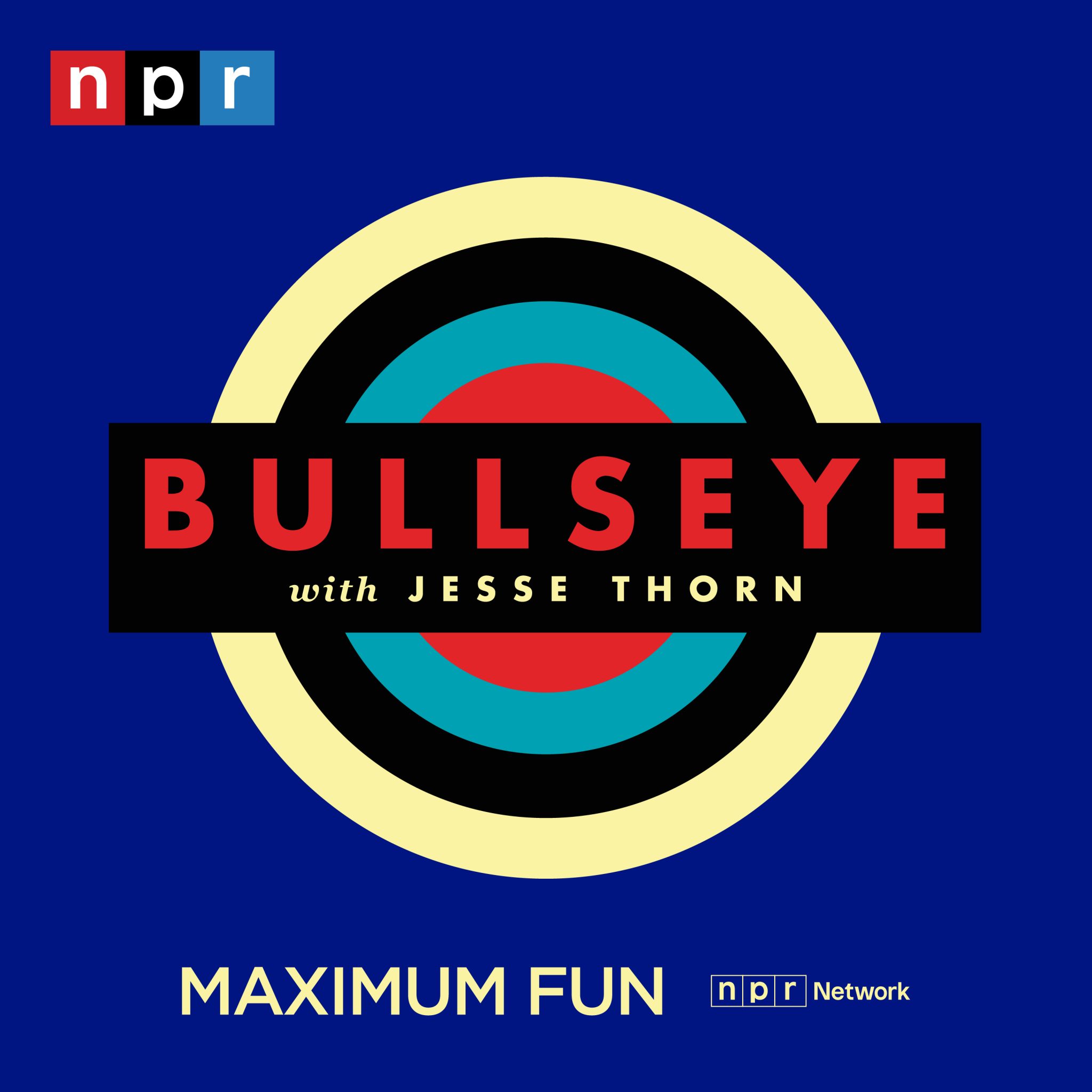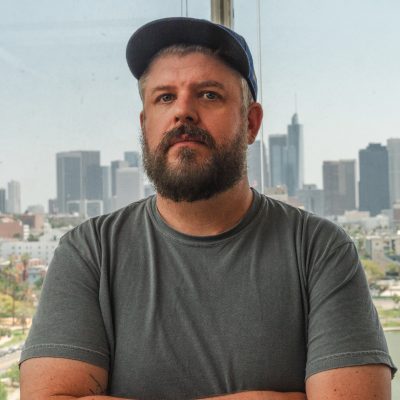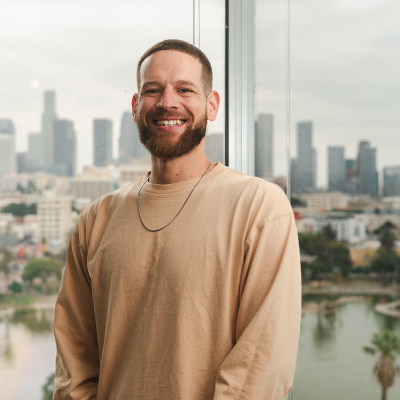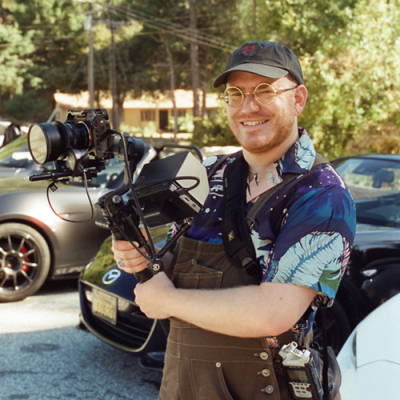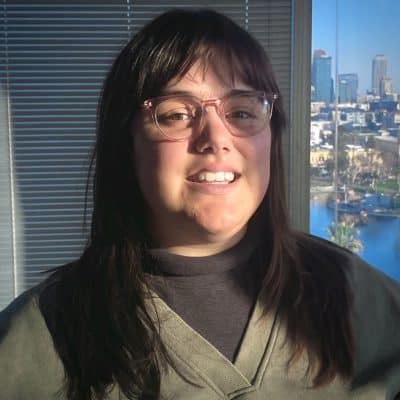Transcript
[00:00:00]
(ADVERTISEMENT)
Transition: Gentle, trilling music with a steady drumbeat plays under the dialogue.
Promo: Bullseye with Jesse Thorn is a production of MaximumFun.org and is distributed by NPR.
Music: “Huddle Formation” from the album Thunder, Lightning, Strike by The Go! Team—a fast, upbeat, peppy song. Music plays as Jesse speaks, then fades out.
Jesse Thorn: It’s Bullseye. I’m Jesse Thorn. November 21st, 1962. Sérgio Mendes made his Carnegie Hall debut. It was a concert that highlighted bossa nova. In Portuguese, that means “the new trend”. Mendes was 21 years old. He flew in from Brazil. Over the next few years, he and a cohort of Brazilian musicians changed popular music in America and in the world.
Here’s a bit of his first hit with his band Brasil ‘66, “Mas Que Nada”. Maybe you know the title, maybe you don’t. You absolutely know the hook.
Music: “Mas Que Nada” from the album Herb Alpert Presents Sérgio Mendes & Brasil ‘66 by Sérgio Mendes & Brasil ’66.
Oooo, aria raio, obá, obá, obá
O o-o-o-o arya ayo, obá, obá, obá
Mas que nada
Sai da minha frente que eu quero passar
Pois o samba está animado
O que eu quero é sambar
(Music fades out.)
Jesse Thorn: Mendes died last month. He was 83 years old and had been dealing with long COVID for several months. When I talked to him ten years ago, he’d just released Magic. He collaborated with Janelle Monáe on one of the tracks. This is “Visions of You”.
Music: “Visions of You” from the album Magic by Sérgio Mendes.
Truly, I do admire
Harmony and fire
Let’s sing out loud
With the symphony in your eyes
Now that you are here…
(Music fades out.)
Jesse Thorn: Sérgio Mendes, welcome to Bullseye. It’s great to have you on the show.
Sérgio Mendes: Thank you, Jesse. Great to be here.
Jesse Thorn: What do you remember about that concert in 1962?
Sérgio Mendes: Well, I remember—you know, I had this band in Brazil called The Bossa Rio. It was a saxophone, trumpet, guitar, bass, drums, and myself. And when the invitation came, I was working on a club in Rio, in Copacabana, called The Bottles Bar. That was the hang for the bossa nova days. So, musicians would get together, we would jam, and foreign musicians would come to Brazil. Everything was The Bottles Bar.
And then, like you said, November of ‘62, bossa nova was exploding, you know. The great songs from Antônio Carlos Jobim, “Girl from Ipanema”. “Desafinado” was a big hit with Stan Getz. And so, I came to New York with Jobim and João Gilberto. And of course, for me being, you know, 21 years old and (inaudible) New York, I just couldn’t believe that I was there, first of all. That was my dream to one day come to the United States. And then meeting all the great musicians like Dizzy Gillespie, Stan Getz, Cannonball Adderley. For me, it was a wonderful—you know, a very magical moment of my life to be there and meeting all those people that I adored, that I loved so much. And so, yeah, it was a wonderful experience.
Jesse Thorn: When did you start playing piano?
Sérgio Mendes: I started playing piano, I was seven years old. And my mom wanted me to learn classical music. And so, I got a piano, an upright Brazilian piano. And I took lessons, and I started, you know, playing the usual classic repertoire and kind of not liking much. Because I wanted to be on the beach playing football and on the streets. And so, the piano was kind of—I had a kind of a relationship—not hate. But you know, I liked it very much, but I wanted to be out. You know, I wanted to be on the beach with the other kids.
But it was very, good because I learned the classicals, the classics. And when I start playing like Ravel and Debussy and Beethoven—and Chopin—was really getting even better. And then when I was about 12 years old, somebody played me a record. It was a Dave Brubeck record, and the song was “Take 5”. And I was fascinated. I said, “Wow, what’s that?”
[00:05:00]
It didn’t sound like anything I’d ever heard in my life. So, from that record to other records, and listening to, you know, the great jazz pianists. And so, that was my—was something, for me, so unbelievable. Because I could not relate that to anything that I was listening on the classical repertoire. So, we start putting together bands, trios, quartets. So, we start trying to imitate and to play those chords from the great pianists. And that was my beginning and my introduction to jazz.
Jesse Thorn: You were still a teenager when you met Cannonball Adderley, right?
Sérgio Mendes: Yes, yes. The day after Carnegie Hall, the Birdland—which was like the place, and that I only knew in the books, on the cover of records about the Birdland. So, we went to Birdland. And there was Cannonball playing with his band. So, somebody introduced me to him, and he asked me if I would like to play a song with them. I said, “Wow.” I couldn’t believe it.
So, that for me—when I mentioned about my new album, I called it Magic, because—you know, I said the magic of the encounter, which for me is so important, in my life has been like that. Every people that—you know, so many people that I met like that, that encounter, that magic— I never thought I was going to meet Cannonball Adderley, or Dizzy Gillespie, or later on Frank Sinatra or— You know, so that magical journey for me, it’s been very important. And I’m enjoying it very much.
Jesse Thorn: I have a song here that you wrote that was on—and also played on a Cannonball Adderley record from 1963. The album was called Cannonball’s Bossa Nova, and the song is called “Groovy samba”. Let’s take a listen.
Music: “Groovy samba” from the album Cannonball’s Bossa Nova by Cannonball Adderley—a high-energy, brass-forward bossa nova number.
(Music fades out.)
Sérgio Mendes: I haven’t heard that, I guess, since those days. Wow. Wonderful. Bringing me wonderful memories. Cannonball was an amazing human being. He was also, you know, like a great teacher. And yeah. That was…
Jesse Thorn: What did you learn from him?
Sérgio Mendes: You know, his lyrical playing. You know, his melodical improvisation, the notes he played. You know, he was such a melodist. I mean, when you hear his solos, it’s not just scales. You know, it’s like songs. And that for me was so incredible to hear that, because he had that sense of melody and very lyrical playing. You know, and I love that.
Him and, you know—I mean, Lester Young and so many guys from that generation. But Cannonball was very special.
Jesse Thorn: More with the late Sérgio Mendez still to come. Stay with us. It’s Bullseye from MaximumFun.org and NPR.
(ADVERTISEMENT)
[00:10:00]
Transition: Bright, chiming synth with a syncopated beat.
Jesse Thorn: I’m Jesse Thorn. This is Bullseye. We’re replaying my conversation with the Brazilian musician Sérgio Mendes. He died last month at 83.
Okay, so I’m not a musician, and I want to ask you a very remedial-level question. I wonder if you could describe to me, as a guy who abandoned keyboard classes at age eight, what samba is and what bossa nova is?
Sérgio Mendes: Well, as you know, Brazilian music, it’s—we have such a great diversity in Brazil, cultural diversity. So, music came in originally with the Portuguese that colonized us. And then we had the Dutch came in, the French. But one of the most important contributions, I think, are the Africans that came to Brazil. You know, the Portuguese brought the slaves—same thing that happened here—and they brought the wonderful rhythms and—you know, the same thing they did in the United States. So, I think that African influence on Brazilian music, it’s so important. And when you add that to, you know, the Europeans—you know, the Iberic sounds of not so much Spain, but I would say Portugal was the fado, and then the French.
So, I think that cultural diversity brought a very special kind of music. So, it’s kind of—there’s not one kind of music in Brazil. samba is the original rhythm that came from Africa. So, it’s a generic name. But if you go to Bahia in the north of Brazil, Salvador, you’re going to hear a kind of samba that doesn’t play in Rio. The samba from Rio de Janeiro is different. So, samba is a generic name to describe a rhythm that came from Africa.
Then, bossa nova is the ‘60s, end of the ‘50s. And Antônio Carlos Jobim is responsible for that, the great songwriter, melodist, and composer, arranger. So, when you hear his songs, you know, “Desafinado”, “Ipanema”, “Wave”—I mean, so many beautiful melodies. And that was a very intimate, kind of minimalist kind of sound. You know, you had a guitar, João Gilberto playing guitar, and very little—you know, maybe a little, drummer playing with the brushes. It was a very—but the melodies were just amazing.
And that’s what seduced American musicians like Stan Getz and Dizzy and so many others, and Sinatra and Ella Fitzgerald. The Brazilian songs were very sensual, very romantic also. And I think that was very attractive to a lot of the great singers from the world to sing that kind of repertoire. It was different, harmonically different. But it had those components, you know, being very sensual, very romantic, very catchy melodies, and kind of coming from a place that was a little fantasy. They didn’t sound like Cole Porter, but had reminiscing kind of sounds of like that. You know? I mean, it’s hard for me to explain, but I think that was the element—that romantic, sensual, infectious kind of melody. You know? So beautiful.
Jesse Thorn: I want to play a song written by Jobim. This is your band, Sérgio Mendes & Brasil ‘66, from your 1967 album Equinox. The name of this song, if it was Spanish, would be pronounced “Triste” (trise-de), but is it the same in Portuguese?
Sérgio Mendes: Triste, sad.
Music: “Triste” from the album Equinox by Sérgio Mendes & Brasil ’66—a warm, high-tempo number with robust harmonies.
(Lyrics unavailable.)
(Music fades out.)
Jesse Thorn: Did you feel like with bossa nova you were part of a movement?
Sérgio Mendes: Yes, yes. It was something special. I had that feeling, and we all did. I mean, there were other great composers.
[00:15:00]
A composer, a guitar player named Baden Powell—it’s an English name, but he’s Brazilian—was my teacher. Moacir Santos, I recorded one of his songs on my new album, Magic. But the music was really amazing, very—yeah. And then we had the feeling there was something special. And of course, Jobim was the most important one. I remember that song you just played now. I was living here in LA, in a small apartment in Laurel Canyon. And Jobim was here. He used to come for like six/seven months to stay here in the United States and make records and stuff.
And he called me and said, “I just wrote a song, Sérgio. Let me play it for you.” So, that was the song, “Triste”, that later on he wrote English lyrics for it. It was just—when he played that for me at the piano, it was like, wow, magic. You know? How can you write a melody like that? It’s like great architecture, you know—perfect harmonies and melodies and lyrics and—yeah. But I remember—now listening to that, I remember when he played that song for the first time for me here.
Jesse Thorn: Did you feel at the time like you were an ambassador for Brazil and, you know, even South America and Latin America more generally?
Sérgio Mendes: I never really—you know, people ask me sometimes this question. I was enjoying so much and just doing it. You know, just being part of it and like celebrating every second of it and saying, “Man, this is amazing music.” And no, I never thought about the world ambassador, you know. Because as a musician, I wanted to travel, I wanted to go places, and I wanted to learn. The curiosity was always there. And of course, the music that I grew up with, the music that I love was that music, which I still play. And the wonderful part of that like—even now, today, when we do concerts here in LA, or New York, or whatever we play, and it’s so magical that those songs, people are—you know, young generations that maybe never heard, you know, songs like that. It’s really amazing. And just to be part of that, I feel so blessed and so lucky.
Jesse Thorn: We’ll finish up my interview with the late, great Sérgio Mendes after the break. In just a minute, we’ll talk about what he got out of writing, recording, and performing music in his later years. It’s Bullseye, from MaximumFun.org and NPR.
(ADVERTISEMENT)
Promo:
Music: Fun, jazzy music.
Mike Cabellon: Hey, this is Mike Cabellon.
Ify Nwadiwe: Ify Nwadiwe.
Sierra Katow: And Sierra Katow.
Mike: The hosts of TV Chef Fantasy League.
Sierra: Where we are currently using fantasy sports rules to watch Great British Bake Off.
Ify: Or The Great British Baking Show, as it’s known here in America.
Sierra: We’ve drafted the bakers onto our teams, and now those bakers are earning us points based on how they’re doing on the show.
Ify: And at the end of the season, one of us will win the prestigious TV Chef Fantasy League… trophy? Crown? What is the—?
Mike: Yeah, I don’t know. I keep forgetting to order something. Probably just dinner. Anyway, subscribe to TV Chef Fantasy League, and play along with us at home.
Sierra: Or just listen in as we cry over our bakers’ (in a posh English accent) soggy bottoms.
Ify: On MaximumFun.org or wherever you get your podcasts.
(Music ends.)
Transition: Thumpy rock music.
Jesse Thorn: It’s Bullseye. I’m Jesse Thorn. We’re listening back to my conversation with the late musician Sérgio Mendez from 2014.
What was it like for you as—you know, towards the end of the 1960s, as this—? You know, bossa nova had been such a monstrous phenomenon in the United States. I mean, to the extent that—you know, I think for people like me, who weren’t there then, you know, it’s difficult to get your head around this genre of music coming from Brazil and just being a monster phenomenon. And then it stopped being a monster phenomenon, and you continued. You were still every bit as famous and successful as you had been in the jazz world and internationally and so on and so forth, but you weren’t a hitmaker in the United States suddenly—or relatively suddenly.
Sérgio Mendes: Yeah, well, you know. I was working and traveling and playing all over the world, and some of those songs—I mean, I understood that—
[00:20:00]
—you know, the bossa nova time in terms of—you know, that what happened— You know, it’s like fashion. It was very in. And you know, Stan Getz and then Brasil ’66. But you know, I like Brazilian—I love Brazilian music so much, and I believed on it. You know? And there’s some other great composers that came after bossa nova that also were very wonderful, like Gilberto Gil, Caetano Veloso, Chico Buarque. So, I kept recording those great Brazilian songs and having a great time doing it.
And you know, for me, the life was moving on, and I was enjoying myself and performing, playing everywhere—not as much on the radio like I was before, but they were still playing our songs very much. And for me, things were rolling still. You know? It was like—I was busy working and making records. You know, like almost one record a year. Yeah.
Jesse Thorn: When you’re recording a record—and you’re now in your 70s—what do you—?
Sérgio Mendes: Really?! No! (Laughs.)
Jesse Thorn: I read it on the internet. Did some quick math. So, what are your objectives? What do you hope to achieve when you record an album? Do you want to sell copies of it? Do you want to meet people that you think are amazing? Do you want to record songs that you love? What do you want out of it?
Sérgio Mendes: All of those things, yeah. First starts with the song. I want to write songs. On the new album, I—you know, I was very fortunate and lucky to be able to write with John Legend, with so many other people that are my guests on this album—Carlinhos Brown, with Janelle Monae. So, the writing part of it was a lot of fun. And traveling, going to Rio, going to Bahia, you know, going to a studio here in LA with John Legend. Or you know—that creative moment for me, it’s sooo exciting. Still is. And the making of the record is really amazing, you know. It’s like, let’s do this, let’s change—let’s write a song.
And you know, it took me about a year to write this new album. So, I’m looking for that. I mean, let’s come up with great songs—something fresh, something unique, something, you know, that I haven’t done it before. You know, I remember I sent will.i.am the one of the songs that I wrote was him. And he said, “Yeah, let’s get together again.” You know, it’s been 10 years since we recorded the album Timeless.
So, all those encounters for me, they’re so magical. They’re so great. You know, to revisit things with Will or with John, and I love it. That’s the best part of it. And then I do what I’m doing right now: talking to you and also enjoying that. Because you know, you ask questions that have a lot of significance for me, because it’s my life. It’s how I started. Then when you ask those questions, I have to almost like dive into my past and try to remember. And then you play a song like that song with Cannonball. I haven’t heard that in years. It brings me such wonderful memories. It’s all—it’s a celebration. It’s joyful.
Music: “Going Out of My Head” from the album Herb Alpert Presents Sérgio Mendes & Brasil ’66 by Sérgio Mendes & Brasil ’66.
Well, I think I’m going out of my head
Yes, I think I’m going out of my head
(Music continues under the dialogue.)
Jesse Thorn: Sérgio Mendes from 2014. Let’s go out on one more song from his work with Brasil ‘66. This is “Going Out of My Head”.
Music:
I want you to want me
I need you so badly
I can’t think of anything but you
And I think I’m going out of my head
‘Cause I can’t explain the tears that I shed
Over you
Over you
(Music continues under the dialogue.)
Jesse Thorn: That’s the end of another episode of Bullseye. Bullseye is created from the homes of me and the staff of Maximum Fun in, and around greater Los Angeles, California. Here at my house: my dog, Junior, has recently discovered burying bones. Like, the most classic dog activity of all time. It’s very annoying.
Our show is produced by speaking into microphones. Our senior producer is Kevin Ferguson. Our producers are Jesus Ambrosio and Richard Robey. Our production fellow is Daniel Huecias. Our video editor is Daniel Speer. We get booking help from Mara Davis. Our interstitial music is by DJW, also known as Dan Wally. Our theme song is called “Huddle Formation”. It was written and recorded by The Go! Team. Thanks to them and to their label, Memphis Industries.
[00:25:00]
Bullseye is on Instagram, where you can find pictures from behind the scenes and all kinds of other stuff. @BullseyeWithJesseThorn. We’re also on Twitter, YouTube, and Facebook. And I think that’s about it. Just remember, all great radio hosts have a signature signoff.
Promo: Bullseye with Jesse Thorn is a production of MaximumFun.org and is distributed by NPR.
Music:
Going out of my head over you
Out of my head over you
Out of my head day and night
Night and day and night
Wrong or right
(Music fades out.)
(ADVERTISEMENT)
About the show
Bullseye is a celebration of the best of arts and culture in public radio form. Host Jesse Thorn sifts the wheat from the chaff to bring you in-depth interviews with the most revered and revolutionary minds in our culture.
Bullseye has been featured in Time, The New York Times, GQ and McSweeney’s, which called it “the kind of show people listen to in a more perfect world.” Since April 2013, the show has been distributed by NPR.
If you would like to pitch a guest for Bullseye, please CLICK HERE. You can also follow Bullseye on Twitter, YouTube, and Facebook. For more about Bullseye and to see a list of stations that carry it, please click here.
Get in touch with the show
People
How to listen
Stream or download episodes directly from our website, or listen via your favorite podcatcher!
